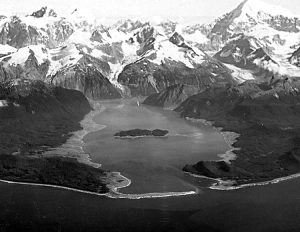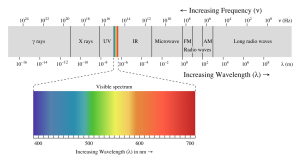Chapter 3: Waves and Tides
Learning Objectives
After reading this chapter you should be able to:
- identify the parts of a basic wave
- define the terminology used to describe the motion of a wave (i.e. period, frequency, speed etc.)
- explain the circular motion of water particles involved in wave motion
- explain the difference between deep water waves and shallow water waves
- identify the factors that influence wave speed in deep and shallow waves
- identify the factors that determine the energy of wind-generated waves
- define the concept of restoring force
- define significant wave height
- explain the creation of ocean swell
- define the concepts of destructive, constructive and mixed interference
- explain why waves break as they approach shore
- explain the differences in the different types of breakers, and how the bottom topography impacts breaker type
- explain why waves approach parallel to shore, and why waves are larger off of points and smaller in bays
- explain how tsunamis are formed, and how they behave in the ocean
- explain Newton’s Law of Universal Gravitation and how it applies to tides
- explain why most places on Earth experience two tides per day, not just the one predicted from gravitational attraction between the Earth and moon
- explain how the Earth, sun and moon interact to create spring and neap tides
- explain why the sun has a smaller effect on tides than the moon
- explain why tides do not occur at the same time every day
- explain the concept of amphidromic circulation
- identify diurnal, semi-diurnal, and mixed tides
- identify the phases of a tidal current
- define a tidal bore
Waves come in many shapes and sizes; a 100 foot wave might be a surfer’s dream, but a ship captain’s nightmare. What was the largest wave ever recorded? 50 feet? 100 feet? Not even close. That record belongs to a wave created in Lituya Bay, Alaska, on July 9, 1958 (Figure 3.1). On that day, a magnitude 7.8 earthquake caused a massive rockslide that slid down a mountainside and into the headwaters of the bay. The rockslide created a splash wave that was high enough to flatten vegetation up to 1722 ft (525 m) above sea level! The wave then moved through the narrow bay towards the sea, destroying a number of fishing boats along the way. Miraculously, a father and son on one fishing boat were carried above the trees by the wave, and survived to tell the story. This is by far the largest wave, a megatsunami, ever reliably recorded. The waves we will discuss in this chapter may not be quite that dramatic, but it is still important to know how they form, how they are propagated, and what happens to them as they interact with the shore.

After discussing various types of waves at sea and along the shore, we will discuss tides. However, at least in terms of wavelength, the largest waves in the ocean are the tides, where one wavelength stretches halfway around the Earth. The crests of these long waves represent the high tides, while the troughs create low tides.
You probably learned when you were younger that the basic cause of the tides is the gravitational attraction between the Earth and moon. This is a very old idea, as the Greek scientist Pytheas first made the connection between the tides and the moon back in 330 B.C.E. Isaac Newton’s gravitational work the 1600s led to our modern understanding of tidal cycles, however, we now know that the tides involve a lot more than just the Earth and the moon. There are many variables that influence the tides, yet despite this complexity, we are able to create accurate tide charts predicting the heights and timing of tides months or even years in advance.
Modified from Paul Webb, used under a CC-BY 4.0 international license. Download this book for free at https://rwu.pressbooks.pub/webboceanography/front-matter/preface/
Radiant energy from the sun is important for several major oceanic processes:
- Climate, winds, and major ocean currents are ultimately dependent on solar radiation reaching the Earth and heating different areas to different degrees.
- Sunlight warms the surface water where much oceanic life lives.
- Solar radiation provides light for photosynthesis, which supports the entire ocean ecosystem.
The energy reaching Earth from the sun is a form of electromagnetic radiation, which is represented by the electromagnetic spectrum (Figure 5.9.1). Electromagnetic waves vary in their frequency and wavelength. High frequency waves have very short wavelengths, and are very high energy forms of radiation, such as gamma rays and x-rays. These rays can easily penetrate the bodies of living organisms and interfere with individual atoms and molecules. At the other end of the spectrum are low energy, long wavelength waves such as radio waves, which do not pose a hazard to living organisms.
Most of the solar energy reaching the Earth is in the range of visible light, with wavelengths between about 400-700 nm. Each color of visible light has a unique wavelength, and together they make up white light. The shortest wavelengths are on the violet and ultraviolet end of the spectrum, while the longest wavelengths are at the red and infrared end. In between, the colors of the visible spectrum comprise the familiar "ROYGBIV"; red, orange, yellow, green, blue, indigo, and violet.

Water is very effective at absorbing incoming light, so the amount of light penetrating the ocean declines rapidly (is attenuated) with depth (Figure 5.9.2). At 1 m depth, only 45% of the solar energy that falls on the ocean surface remains. At 10 m depth only 16% of the light is still present, and only 1% of the original light is left at 100 m. No light penetrates beyond 1000 m.
In addition to overall attenuation, the oceans absorb the different wavelengths of light at different rates (Figure 5.9.2). The wavelengths at the extreme ends of the visible spectrum are attenuated faster than those wavelengths in the middle. Longer wavelengths are absorbed first; red is absorbed in the upper 10 m, orange by about 40 m, and yellow disappears before 100 m. Shorter wavelengths penetrate further, with blue and green light reaching the deepest depths.

This explains why everything appears blue under water. The colors we perceive depends on the wavelengths of light that are received by our eyes. If an object appears red to us, that is because the object reflects red light but absorbs all of the other colors. So the only color reaching our eyes is red. Under water, blue is the only color of light still available at depth, so that is the only color that can be reflected back to our eyes, and everything has a blue tinge under water. A red object at depth will not appear red to us because there is no red light available to reflect off of the object. Objects in water will only appear as their real colors near the surface where all wavelengths of light are still available, or if the other wavelengths of light are provided artificially, such as by illuminating the object with a dive light.
Water in the open ocean appears clear and blue because it contains much less particulate matter, such as phytoplankton or other suspended particles, and the clearer the water, the deeper the light penetration. Blue light penetrates deeply and is scattered by the water molecules, while all other colors are absorbed; thus the water appears blue. On the other hand, coastal water often appears greenish (Figure 5.9.2). Coastal water contains much more suspended silt and algae and microscopic organisms than the open ocean. Many of these organisms, such as phytoplankton, absorb light in the blue and red range through their photosynthetic pigments, leaving green as the dominant wavelength of reflected light. Therefore the higher the phytoplankton concentration in water, the greener it appears. Small silt particles may also absorb blue light, further shifting the color of water away from blue when there are high concentrations of suspended particles.
The ocean can be divided into depth layers depending on the amount of light penetration, as discussed in section 1.3 (Figure 5.9.3). The upper 200 m is referred to as the photic or euphotic zone. This represents the region where enough light can penetrate to support photosynthesis, and it corresponds to the epipelagic zone. From 200-1000 m lies the dysphotic zone, or the twilight zone (corresponding with the mesopelagic zone). There is still some light at these depths, but not enough to support photosynthesis. Below 1000 m is the aphotic (or midnight) zone, where no light penetrates. This region includes the majority of the ocean volume, which exists in complete darkness.


